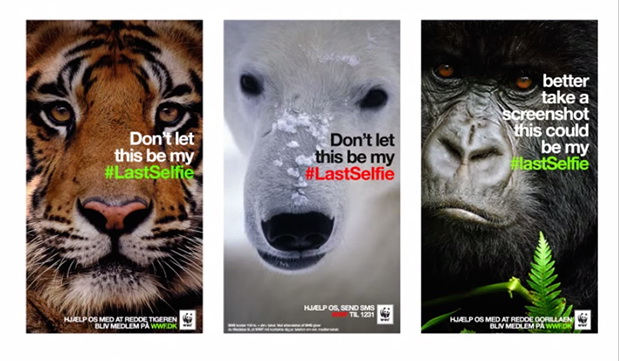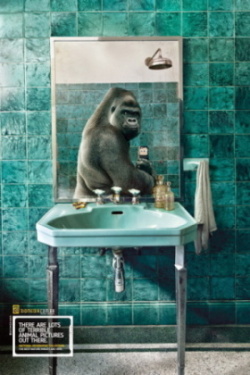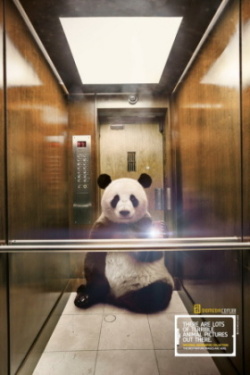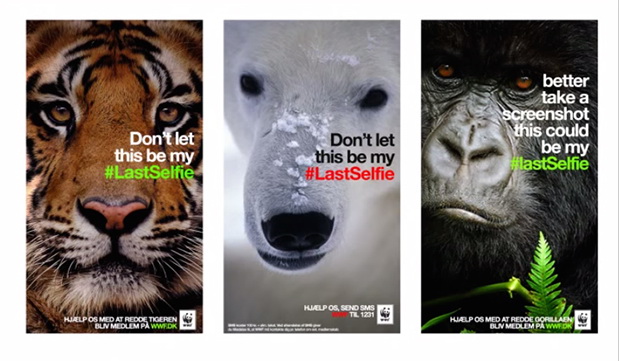Selfies – you either like them or hate them. For marketers, however, selfies are not perceived purely on their likeability, but rather on their advertising power, as suitable tools for brand storytelling and visual expression within social sphere.
However, lately, a new approach to selfie campaigns can be seen within the organisations that are trying to move our focus from ourselves to the world we live in and the impact we have on other living creatures. Charities have already mastered the social engagement in selfie campaigns; now, it may be a time for animal awareness selfie campaigns.
Whether selfie is purely an act of narcissism, an ego-empowering action, revival of our otherwise boring lives, a simple entertaining phenomenon, a serious mental health problem, or a chronicle of our lives, brands are moving quickly to create meaningful campaigns that will connect them to their audience.
With thousands of selfies taken every day, and with ever-growing sharing sites such as Twitter, Snapchat, Instagram, and Imgur, selfies marketing potency is constantly being tested and re-evaluated with charities and major brand’s socially (inclusive) campaigns (Dove, Dunkin Donuts, Star Wars, New York Public Library, Turkish Airline, 1888 Hotel, Waking Dead , The Cape Times, The World Food Programme and more). Most of the campaigns manage to successfully attract the public, and to gain the support of the users; then, there is the Anti-Racism Banana selfie campaign, which apparently was a planned stunt, though when it comes to its success, the reactions differ.
Is there a secret behind a selfie campaign? No, certainly it’s not secret, but rather rational reasons.
So, why do marketers love selfie campaigns?
It is no secret that web users prefer brands that entertain, and with a selfie campaign there is plenty of entertainment one can ask for.
Selfies are not just about the content, they are more about the context, and the context is why smart marketers turn to selfies.
Selfies are humanizing the brand. Even a nonhuman brand can successfully use selfies to personify its products or services.
Selfies are about emotions. Capturing different emotions, selfies are yet again turning to the human element.
Selfies can successfully resonate with a brand’s identity and help form an identity of a brand.
Selfies are an all-age phenomenon. Smart marketers can use this “we-all-like-talking-about-ourselves” opportunity to not limit their target audience.
However, when it comes to animal awareness campaigns, one can certainly notice the new empowering meaning to selfie marketing approach. These campaigns can reshape the term itself, from more or less narcissistic “I am” to the more socially active “I do”.
With animal awareness campaigns, as well as with charities, the context is the most important. Stepping from our everyday lives, from our offices and city atmosphere, and stepping into wildlife is as necessary as ever. We turn to nature when we wish to escape from our city lives, so recreating a need to be connected with nature, is as mandatory as ever. Motivating people to engage, while showing them the importance of bringing change is probably the hardest thing to do.
These animal awareness campaigns have managed to give a new meaning to selfie marketing.
Don’t let this be my #LastSelfie Campaign

The World Wildlife Fund in Denmark and Turkey launched #LastSelfie campaign to turn our attention to endangered animals. Using Snapchat to raise awareness about the diminishing population of tigers, pandas, polar bears, rhinos and orangutans, the WWF used a brilliant way to inspire a new engagement for the audience who have been turning from text-based to image-based communication.
With stunning photographs accompanied with minimal text, the campaign intensifies their message. Users are encouraged to take a picture from the campaign’s images with Quick Chat and then to send a picture to Snapchat. The pictures are allowed to be shared on Instagram, Pinterest, YouTube and other platforms that are engaging people with visual content. Since visually based platforms are primary the attraction of a younger demographic, the WWF is in fact targeting a new generation, and it is a huge successes given that the photos and videos are disappearing within seconds of being viewed.
“The images you see are transient, instant, unique, yet only live for a few seconds. Just like these endangered animals”, said the campaign spot.
National Geographic Animal Selfies Campaign
National Geographic (Heads Advertising in Sao Paulo, Brazil) used selfies in an interesting new approach to animal photography. With “There are lots of terrible animal pictures out there. National Geographic Collection. The best nature images are here” line, NG created a series of pictures with animals taking selfies to capture the attention of a viewer.


Pictures are impressive and with a certain humorous stylistic tone, they did manage to attract the attention. However, I do believe they are telling us something more than just how creative the team behind the campaign was. It is not purely “a-panda-taking-a-selfie-in-an-elevator” picture. It is even more than showing us that National Geographic is known for its excellent photography. There is a certain social context one can discover when looking at these pictures. Here you can see how they made the pictures.
The selfies transformed the digital marketing, and yet selfies can quickly disappear and users can lose interests. What stays beyond their shorter life is a story told and the experience the users gain. When it comes to animal awareness, we need more stories, with or without selfies.



